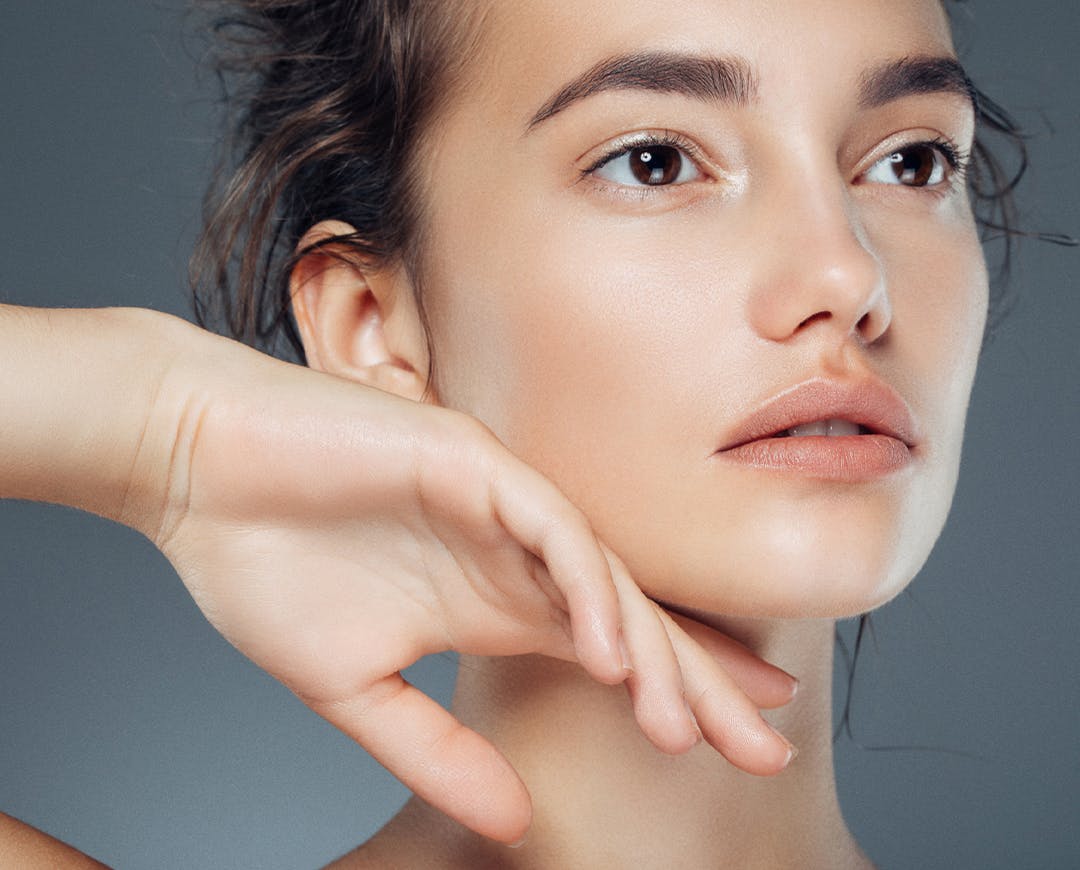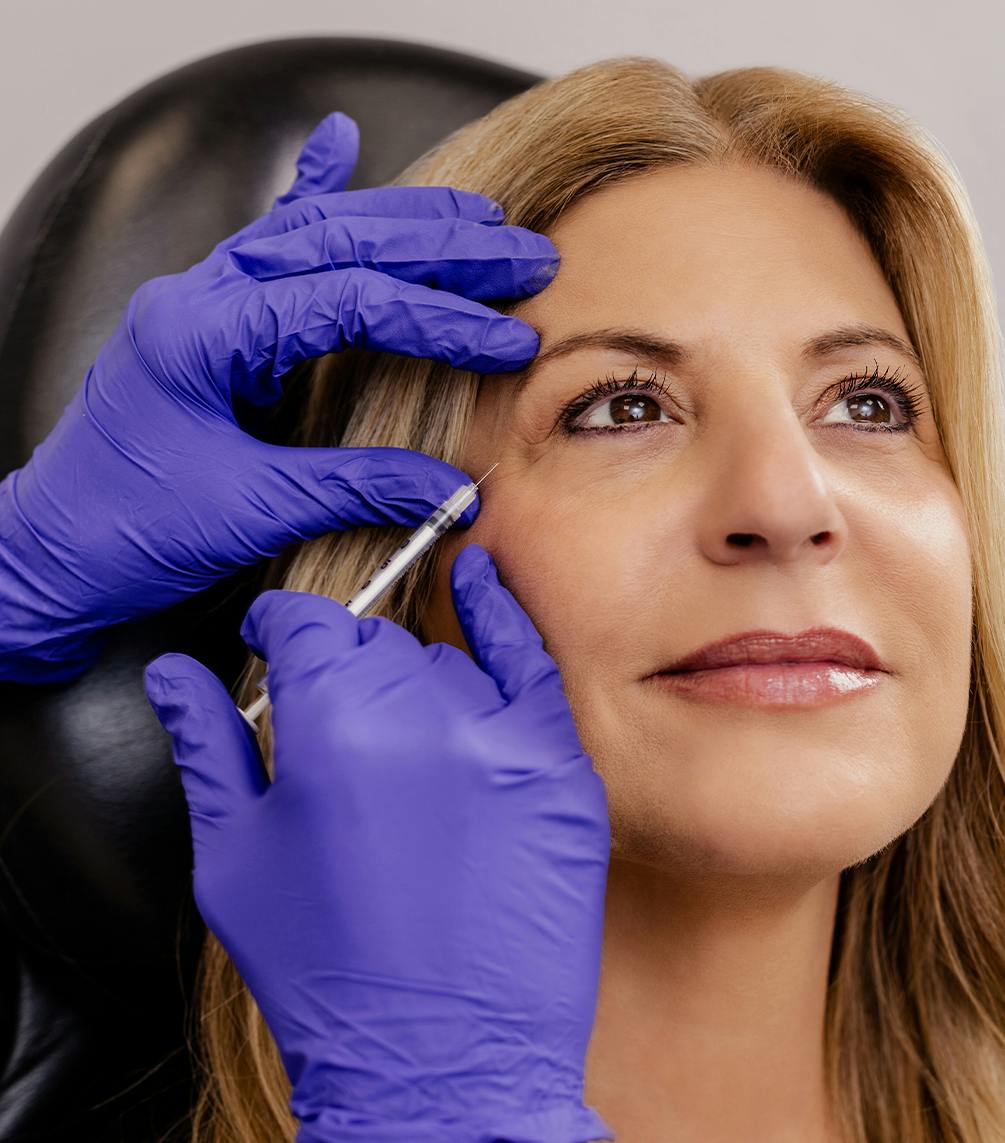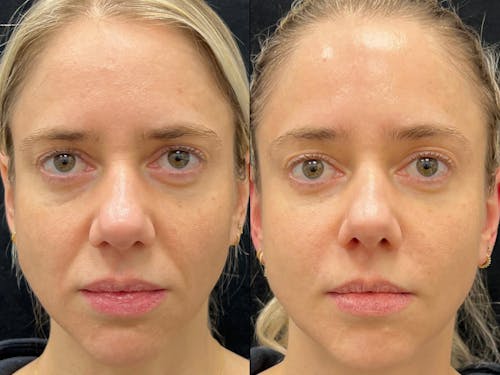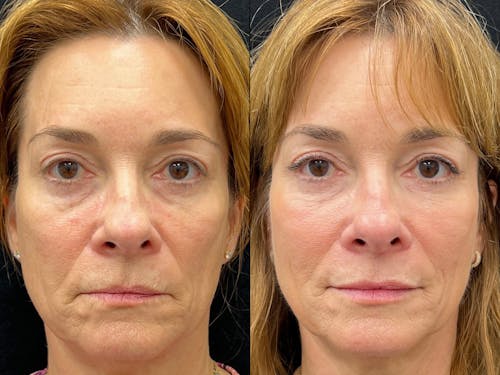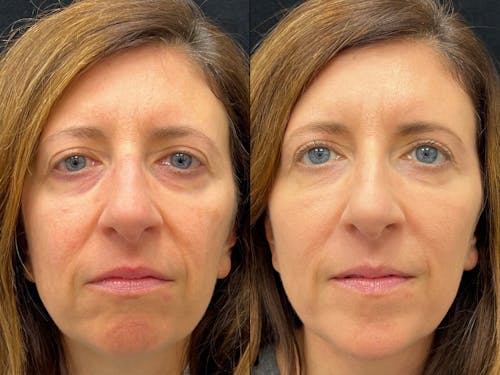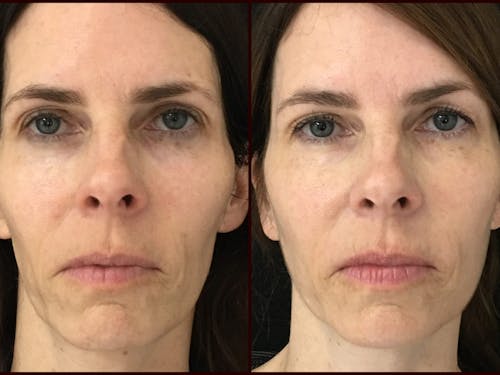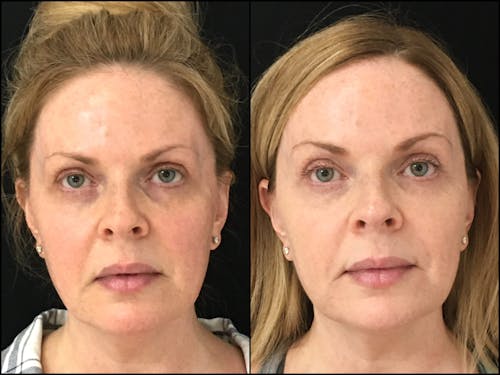The evolution of dermal fillers has resulted in numerous products with different qualities and specifications. This is a testament to the fact that no one product is suited to meet the needs of each patient. Dr. Levin is able to provide customized treatments dermal filler in Westport and Fairfield, CT areas.
Types of Dermal Fillers
Dermal fillers can be divided into ‘passive fillers’ that are made from hyaluronic acid (Juvederm® and Restylane®) and restore volume without stimulating collagen production, and ‘active fillers,’ such as Radiesse®, Sculptra®. Active fillers replace lost volume and stimulate the patient’s collagen production. The longevity of each facial filler depends on its composition and properties and area of placement.
Different fillers have specific qualities that make them ideal for different areas of the face. In the delicate eye area, dermal fillers can be a powerful rejuvenation tool to improve the appearance of eyelid bags and dark circles, drooping eyebrows, or asymmetric appearance. Extensive experience with dermal fillers in the eye area is required to achieve the best results and avoid complications.

